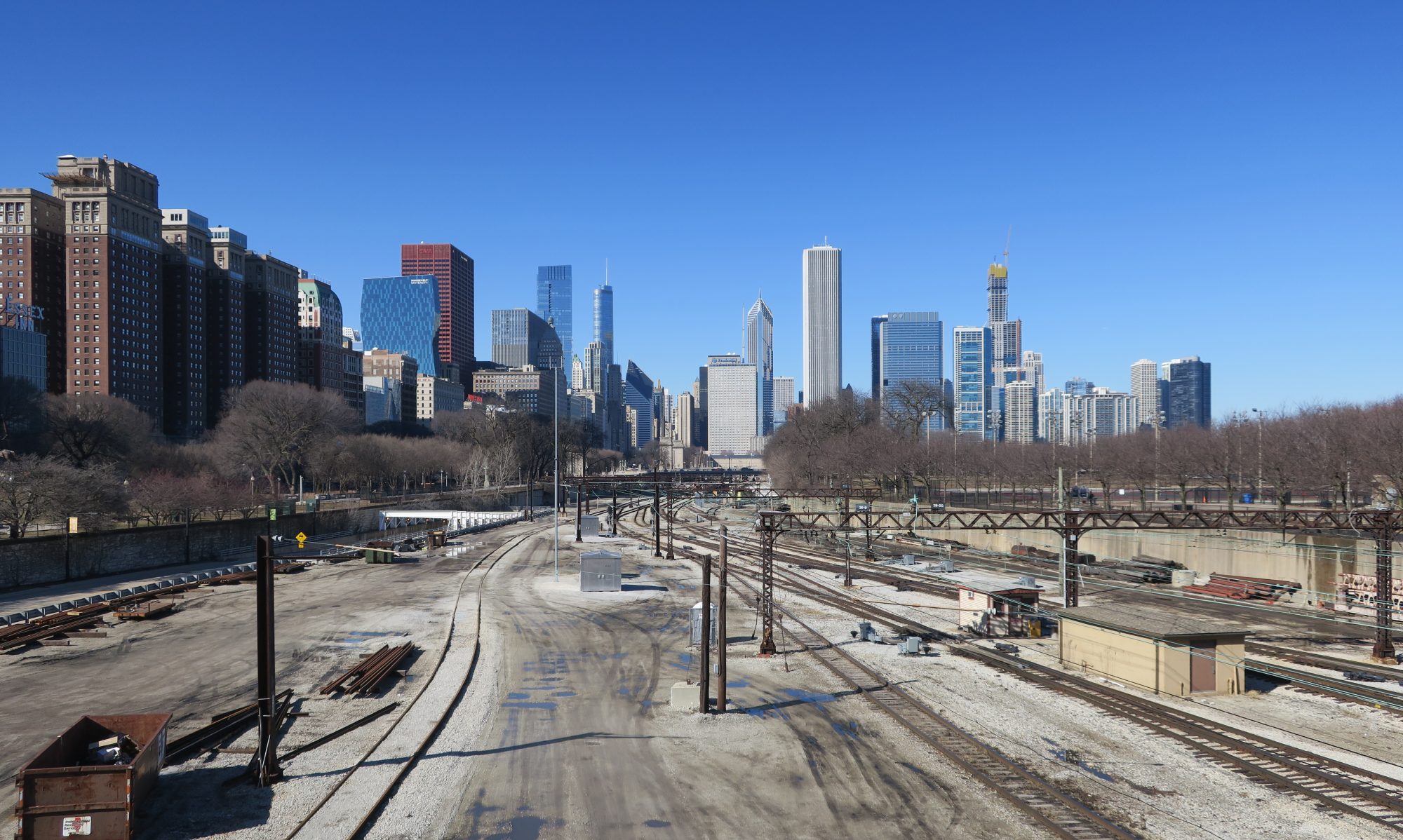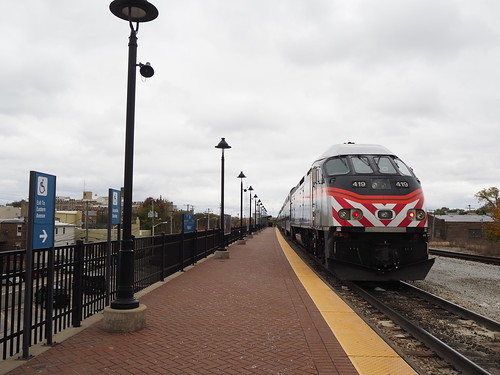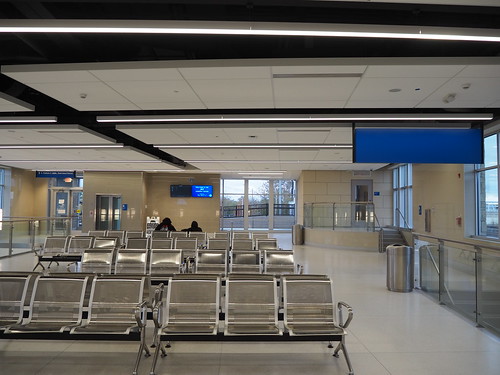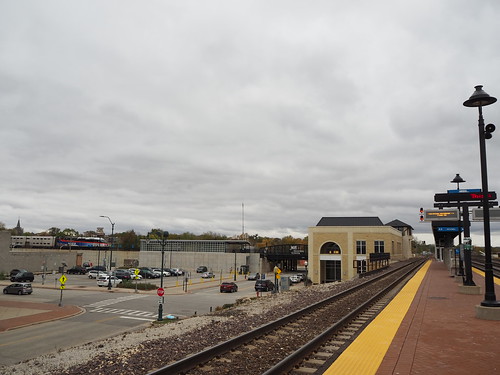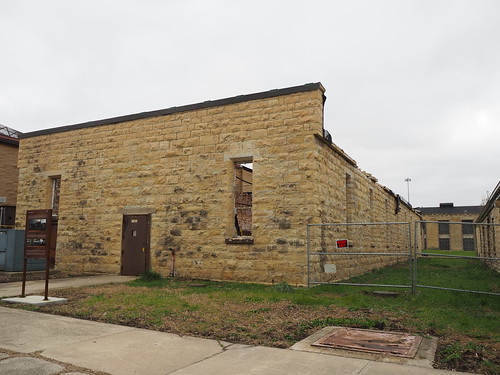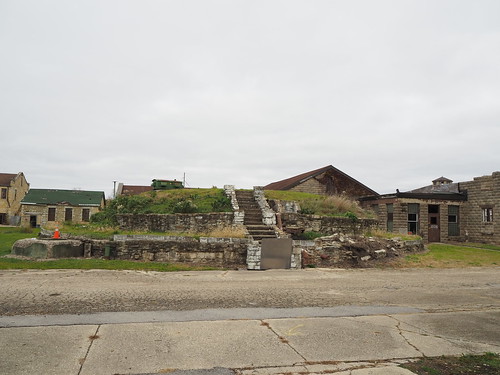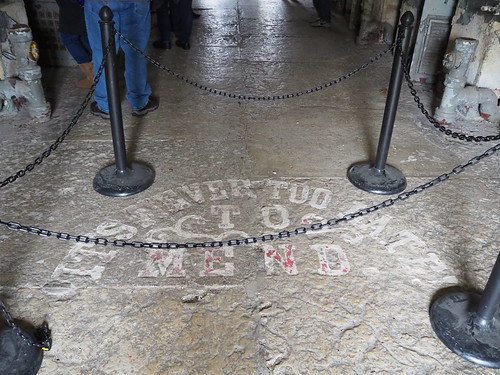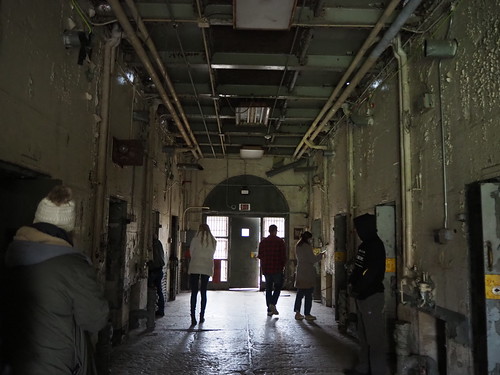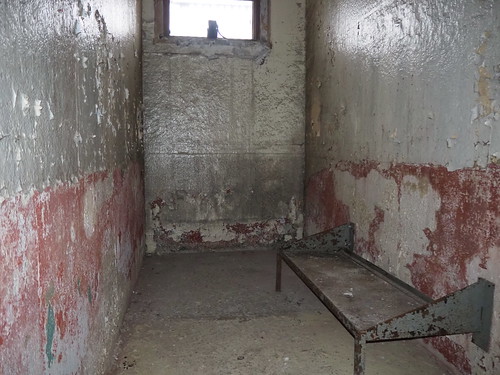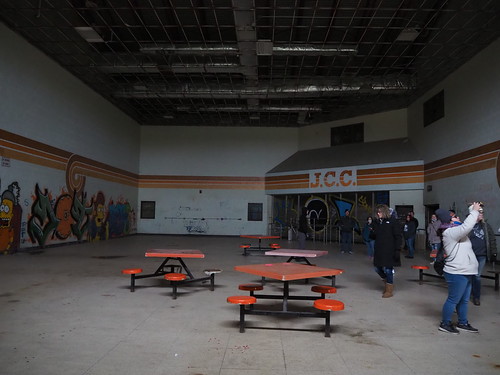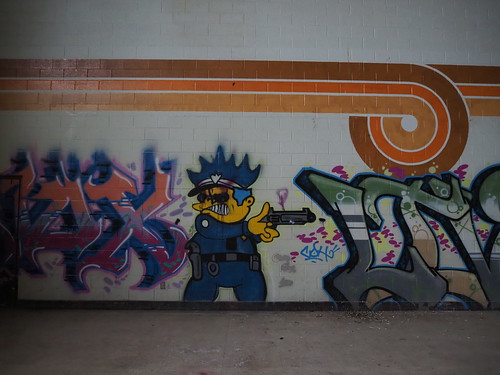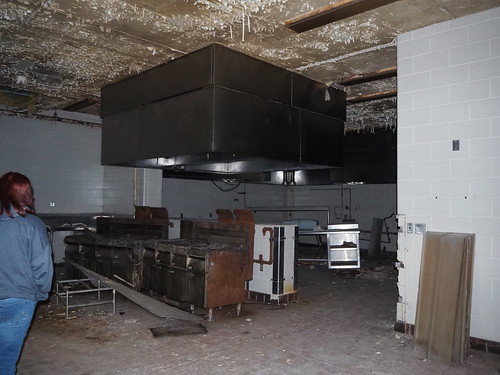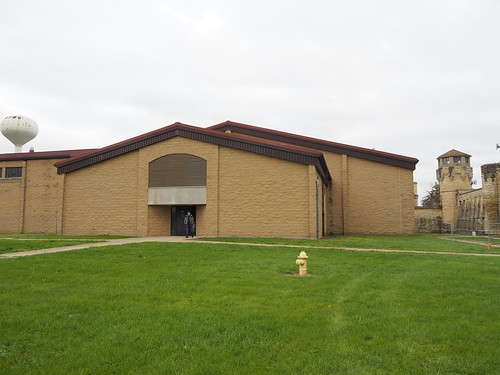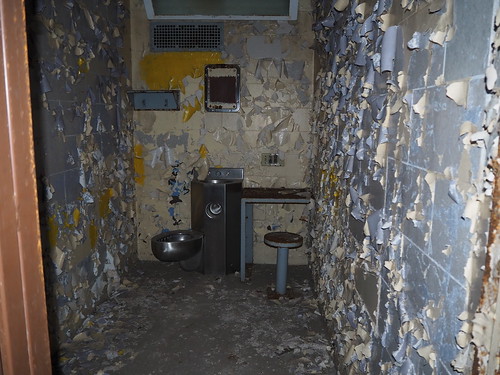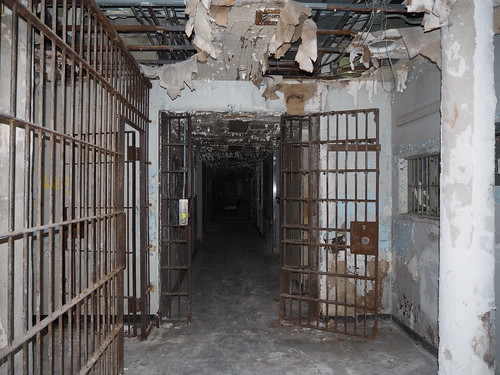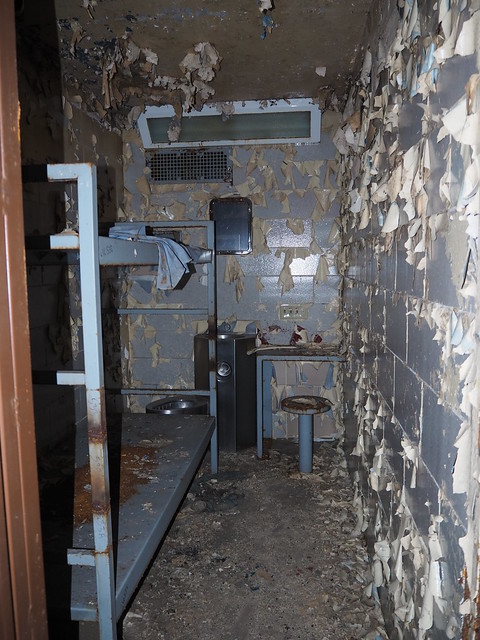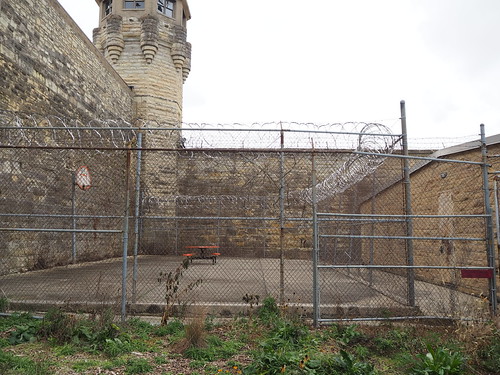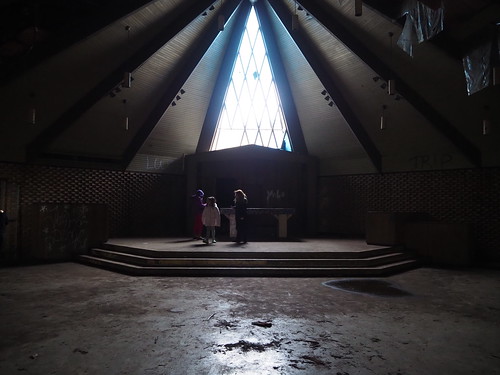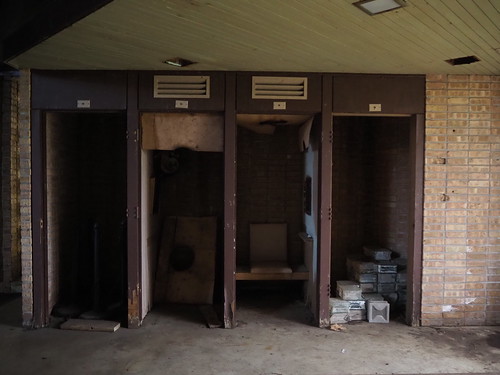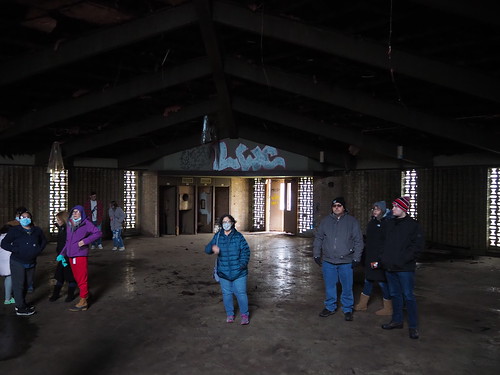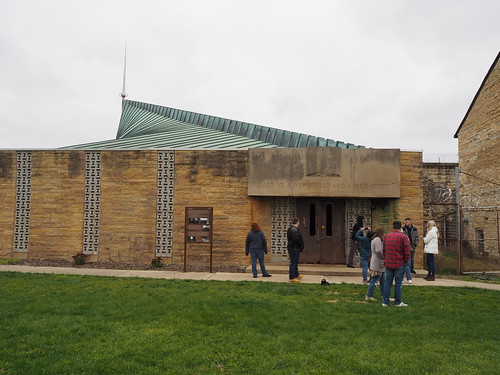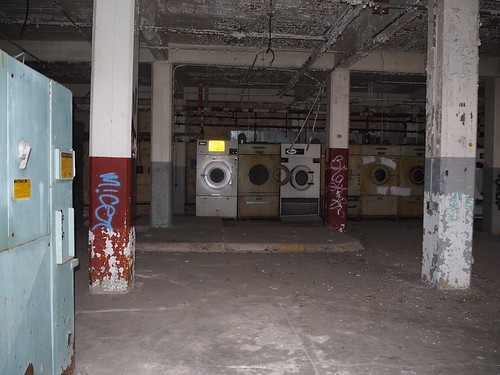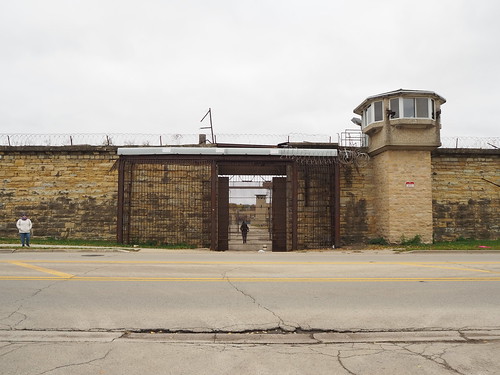Today I took a trip down the Joliet Correctional Center in, you guessed it, Joliet. It was an active maximum security Illinois state prison from 1858 to 2002 and held a number of well-known inmates, including Nathan Leopold and Richard Loeb, Baby Face Nelson, John Wayne Gacy, and most famous of all, Jake Blues. It’s interesting that the most famous inmate is fictional.
To get there, I took the Metra Rock Island District to Joliet, then a Pace bus. Of course I got some pictures of the Metra station on the way:
Then, I went into the prison on a tour. It was definitely very eerie being in there. The building is a little worse for wear (it was closed due in part to being in poor condition and has seen virtually no maintenance in the intervening two decades). You can see all of the photos I deemed worthy of publication in my Flickr album, but keep reading to see a selection of them with more detailed descriptions.
We entered via the eastern gate where Jake Blues famously walked out. According to the tour guide the gate was actually welded shut, they only opened it after the film company bribed the warden to let them use it and have a crew break the welding. Even then, they only got one shot and five minutes.
Along the path from that gate were the industry buildings to the north and a few other buildings like inmate intake processing to the south.
We then headed to the solitary confinement building, which had solitary confinement cells on the first floor and death row cells on the second.
Then we headed into the cafeteria building, which was segregated by race into north and south cafeterias (I don’t know/remember which one was which). The north cafeteria in particular included some interesting Simpsons-based graffiti.
Then we left to head towards the cell house, passing by (but not entering) the gymnasium.
The tour guide then let one of the people on the tour open the door to the east cell house.
Apparently the eastern cell house cells had beds removed post-closing for maintenance reasons. Also a sobering fact that the left portion of the ceiling in the cell block was added to prevent inmates from trying to jump to their deaths, with apparently as many as three suicides per day.
We then left the cell block and walked by the hospital but couldn’t enter it.
We then entered the western cell house, which apparently housed inmates that were disliked even by the other inmates (use your imagination).
Here, note the closed doors instead of bars. Apparently this was to avoid inmates throwing stuff at the guards. The inmates here were so disliked that they even had their own yard to avoid contact with other inmates.
We then passed the school and headed towards the chapel.
It’s hard to see in the photos but the ceiling was in pretty bad shape due to apparently the roof being struck by lightning.
We then walked by a few other buildings to conclude the tour.
We then left via the eastern gate via which we entered.
I don’t really have much to say, I think the pictures speak for themselves. It was a very interesting tour.
